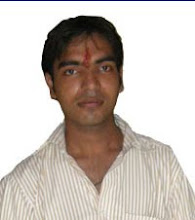This resource is about the republic day of India. It gives a brief summary of the independence of India and how we became a sovereign republic nation.
Republic Day is the name of a public holiday in several countries to commemorate the day when they first became republics. Some of these are former Commonwealth realms, in which the British monarch was head of state until the change of status.
Although India obtained its independence on August 15, 1947, the Constitution of India came into effect only on January 26, 1950. During the transition period from 1947 to 1950, King George VI was the head of state. Lord Mountbatten and C. Rajagopalachari served as the Governors-General of India during this period. Following January 26, 1950, Rajendra Prasad was elected as the first president of India.
The Constitution of India was formally adopted by the Parliament, and India declared itself as a "Republic" on January 26, 1950, a date thereafter celebrated annually as Republic Day in India. The Constitution had been prepared by the Constituent Assembly which was set up upon India gaining its independence from the British in 1947. This, in fact, was a deliberate act: the 26th of January was initially India's "Independence Day", one of Mahatma Gandhi's many symbolic acts during India's Freedom Struggle against the British colonial rule, and the adoption of the Constitution on this date was felt able to strengthen its initial meaning, one calling for Indians of all ages to declare their freedom from the British Raj.
It is one of three annual national holidays in India, the other two being the nation's Independence Day on August 15 (since 1947) and the birthday of Mohandas K Gandhi or Mahatma Gandhi on October 2. And so, after the disposal of the Empire of India; King George VI was the last and only "King" of the modern India.
To mark this occasion, a grand parade is held in New Delhi, the Capital of India, beginning from Raisina Hill near the Rashtrapati Bhavan (Presidential Palace), along the Raj
path, past India Gate and on to the historic Red Fort in the old quarter of the city. Different infantry, cavalry and mechanized regiments of the Indian Army, the Indian Navy and the Indian Air Force march in formation, decked in all their finery and official decorations. The President of India, who is also the Commander in Chief of the Indian Armed Forces, takes the salute. The Chief Guest of the parade is a Head of State of another nation. The parade also includes many traditional dance troupes, to symbolize the cultural heritage of India. It traditionally ends with a colourful flypast by Air Force jetsin a tiranga formation. Similar parades are held in the capitals of all the states of India, where the Governor of the respective state takes the salute.
Before the parade starts, the Prime Minister of India lays a wreath at the Amar Jawan Jyoti at India Gate, commemorating all the soldiers who sacrificed their lives for the country. The President, who is also the Supreme Commander of the Armed Forces, then arrives in his motorcade, escorted by his bodyguards. The President is accompanied by a notable foreign Head of State - who is the Chief Guest at the celebration. The President presides over the function.
Soon afterward, a 21 gun salute is presented, the President unfurls the National Flag and the National Anthem is played. This marks the beginning of the parade. The Parade begins with winners of gallantry awards passing the President in o pen jeeps. Various divisions of the Armed Forces then salute the President of India. The parade also sees the Indian Military showcasing its latest acquisitions such as tanks, missiles, radars, etc.
pen jeeps. Various divisions of the Armed Forces then salute the President of India. The parade also sees the Indian Military showcasing its latest acquisitions such as tanks, missiles, radars, etc.
The military contingent contains representatives of all three divisions of the Armed Forces (air, sea and land). There are also massive parades of Police contingents, Home guards , Civil Defense and the National Cadet Corps.
The military parade is followed by a colourful cultural parade. India's rich cultural heritage is paraded with tableaux from various states. Each state depicts its unique festivals, historical locations and art forms. The most cheered section of the parade is the children who have won National Bravery Awards. They ride past the dais on elephants. School-children from all over the country also participate in the parade. The parade also includes displays of skillful motor-cyle riding, usually by a division from one of the Armed Forces.
The most eagerly awaited part of the parade is the fly past, put on by the Indian Air Force. The parade concludes with a Fly Past, when fighter planes of the IAF roar past the dais, symbolically saluting the President.
However, the official conclusion of Republic Day festivities is much later - on the evening of January 29, i.e. three days after Republic Day. This ceremony is called Beating the Retreat.
HAPPY REPUBLIC DAY !
"सारे जहाँ से अच्छा हिन्दोस्तान हमारा ।
हम बुलबुले है इसकी ये गुलसिता हमारा"


No comments:
Post a Comment